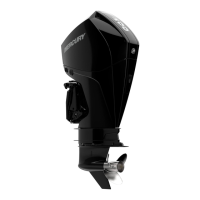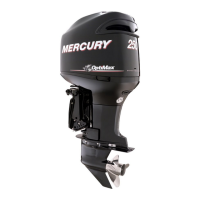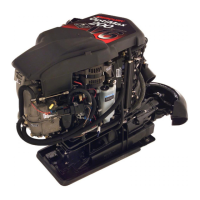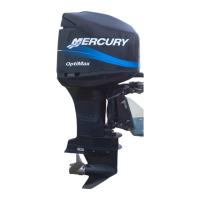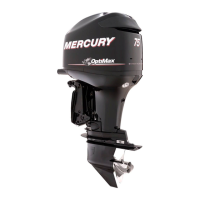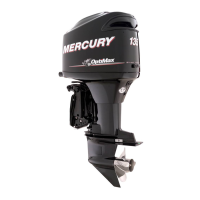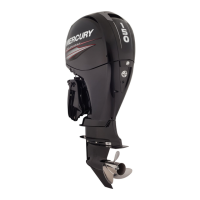INSTALLATION
90-888438 JUNE 2002 Page 1D-3
Torque Specifications
NOTE: Tighten all fasteners, not listed, securely.
10 mm Fasteners
(Powerhead to Pump) 35 lb. ft.
(47 Nm)
Reverse Stop Screw 120 lb. in.
(14 Nm)
Forward Stop Screw 120 lb. in.
(14 Nm)
Ride Plate-to-Pump Screws 75 lb. in.
(8.5 Nm)
Pump Cover to
Pump Housing Nuts 35 lb. ft.
(47 Nm)
Installation Requirements
IMPORTANT: The M
2
Jet Drive is considered an INBOARD engine. The boat it is
installed in must meet industry standards (ABYC, NMMA, etc.), federal standards and
Coast Guard regulations for INBOARD engine installations
Battery/Battery Cables
IMPORTANT: Boating industry standards (ABYC, NMMA, etc.), federal standards and
Coast Guard regulations must be adhered to when installing battery. Be sure battery
cable installation meets the pull test requirements and that positive battery terminal
is properly insulated in accordance with regulations.
IMPORTANT: Engine electrical system is negative (–) ground. It is recommended (re-
quired in some states) that battery be installed in an enclosed case. Refer to regula-
tions for your area.
1. Select a battery that meets all of the following specifications:
FOR OPTIMAX ENGINES –
a. 12-volt marine type.
b. 1000 Marine Cranking Amps (MCA) or
750 Cold Cranking Amps (CCA) minimum.
c. Reserve capacity rating of at least 105 minutes.
FOR Carbureted and EFI ENGINES –
d. 12-volt marine type.
e. 670 Marine Cranking Amps (MCA) or
520 Cold Cranking Amps (CCA) minimum.
f. Reserve capacity rating of at least 100 minutes.
2. Select proper size positive (+) and negative (–) battery cables using chart. Battery
should be located as close to engine as possible.
IMPORTANT: Terminals must be soldered to cable ends to ensure good electrical
contact. Use electrical grade (resin flux) solder only. Do not use acid flux solder, as
it may cause corrosion and a subsequent failure.
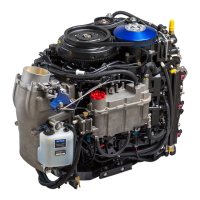
